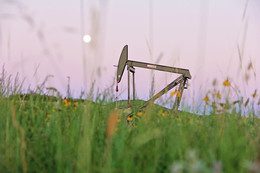

Underreported oilfield wastewater spill in northwest North Dakota
BISMARCK (AP) — North Dakota regulators are investigating the spill of oilfield wastewater from a broken pipeline in the northwest of the state.
Karl Rockman, of the state Department of Environmental Quality, said Monday that New York-based Hess Corp., the pipeline's owner, reported the saltwater spill near Ray on Aug. 15, and estimated its size to be 8,400 gallons. Rockman said Monday that the spill now appears to be at least 100 times larger than that.
It was not immediately known what caused the leak to the pipeline. Agency officials were on scene to oversee the cleanup and investigate the spill, said Rockman, who heads the department's division of water quality.
Rockman said it was unknown if any drinking water sources were threatened or how much land was affected.
Wastewater is a byproduct of oil production that contains saltwater and oil, and sometimes chemicals from hydraulic fracturing operations.
Saltwater is an unwanted byproduct of oil and gas development and is considered an environmental hazard by the state. It is many times saltier than seawater and can easily kill vegetation exposed to it. Referred to produced water by the industry, it also may contain oil and chemicals from hydraulic fracturing operations.
The largest such spill on record in North Dakota occurred north of Williston over a period of five months in 2014 and 2015. It contaminated more than 30 miles of Missouri River tributaries, as well as land and groundwater.
Summit Midstream Partners' pipeline leaked 700,000 barrels, or 29 million gallons, of wastewater. Summit was ordered to pay $35 million in civil and criminal penalties.